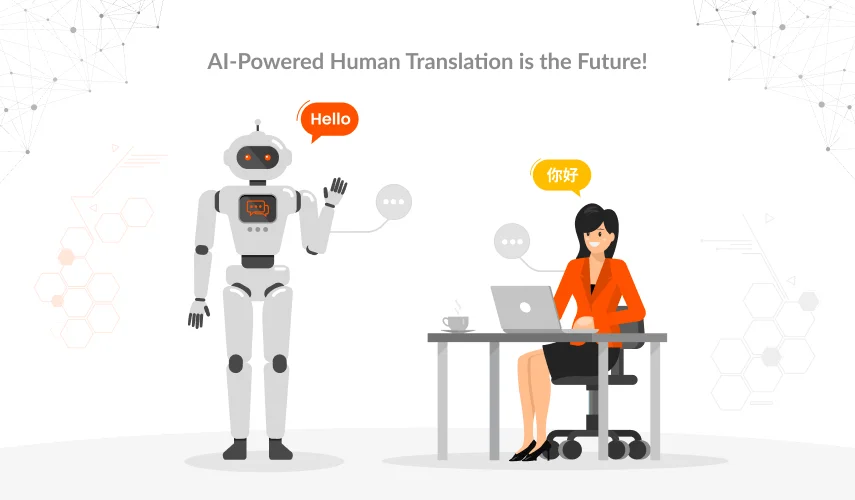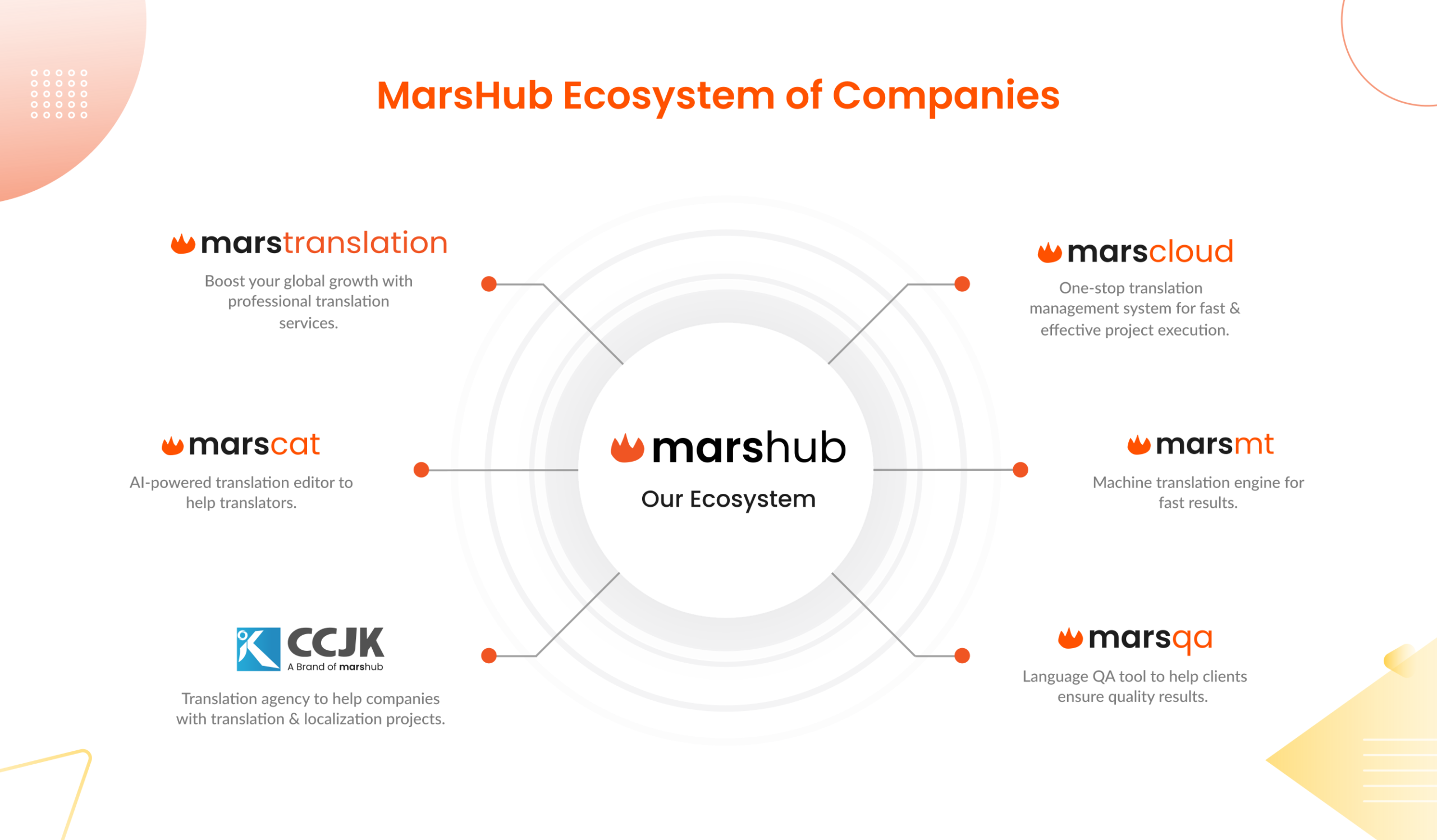Localization is becoming more and more important for businesses that want to scale internationally. Competition is getting intense, and with all the business opportunities, capturing foreign market share is still not easy at all. Fortunately, there are fewer trade restrictions and free markets that turn things in favor of global businesses. However, it’s not that easy because you’re not alone in the game.
Long gone is the time of monopoly, when one company would rule the world; unapproachable with almost no competition. The world is a different place today; even if you are making the most innovative products, at affordable prices, with the right marketing and packaging, there’s always the threat of competition. You must have the right tools and resources to stay in the game and thrive in the global market. Translation management systems are, indeed, the need of the hour for any business aiming for international markets.
Translation Management System (TMS) – Definition
A translation management system is a tool used to generate translations into multiple languages with minimal cost and time. These systems are designed to generate high-quality and error-free translations without causing much hassle. Unlike human translators, TMS translations not only cost you less money but in most cases, there are fewer mistakes and manual errors. The advanced TMSs save you time by streamlining the translation tasks, keeping the workflow agile and effortless. Companies must use only professional and paid TMS for generating translations for their brands. Open-source tools are not capable enough to produce up-to-the-mark translations. Most TMSs also contain data security tools that ensure the protection of your information and keep your content confidential. Not just that, a TMS also has advanced communication features that allow the localization team and translators (in-house and remote) to collaborate with each other in real time.
Importance of Translation Management Systems
Localizing your brand is critical for the success of your business in the foreign market. To build a connection with audiences and resonate with them on a deeper level, your brand must speak the local language. Translation is a major aspect of localization, so companies have to do it right to build a strong brand persona in international markets. Following are some major uses of TMS for businesses, media platforms, healthcare providers, and researchers who want to target global audiences.
1. International Brands
a) Better Team Communication
Localization is a complex job that not just demands hard work but strong communication between translators and other teams. Having TMS would help you fill the communication gaps and enable localization teams to collaborate with each other regardless of their locations. TMS has advanced communication tools that allow businesses to communicate with their remote employees in real time. Moreover, all information and data are stored in a centralized location, which makes it easier for the remote teams to access translation documents anytime they want.
b) Scale their Businesses
Scaling your business in a foreign market is way more difficult than entering a foreign market. Things can get out of control when you expand your operations. You may need more resources and tools to fulfill the increasing demands of your business. Professional TMSs would help you manage the excessive workload by automating the localization operation and keeping your translation processes faster.
You don’t have to hire more staff or bring in more resources because TMS would manage your workload and help you carry out day-to-day translation operations with minimal human intervention. This way you can easily scale your business in a foreign market by spending more money and effort.
2. Media Platforms
a) Generate large volumes of Translations
Media platforms, whether it is Netflix or YouTube, need to translate a massive amount of content into local languages. Media streaming platforms like Netflix encourage content creators to produce original content that reflects their true culture, instead of keeping it English. Afterward, the original content is dubbed into local languages, and they provide subtitles for it. This way content can reach a wide range of foreign audiences, and content creators get the chance to enter new markets. TMS is a helpful tool, it allows the content producers to translate a large amount of content into local languages. Whether you want to get native translators on board or use built-in machine translation facilities, in both cases your translation process will be agile and effortless.
Instead of adapting the stories to pop culture, or internationalizing the content, content creators can tell stories in their original language representing their cultures.
b) Collaborate with Native Translators
When it comes to localizing the content for new foreign audiences, the demand for native translators is becoming at an all-time high. Native translators are not just able to better understand the linguistic intricacies but also create translations that are culturally resonating. With TMS, it is much easier to collaborate with native translators working from remote locations. Translators can collaborate with in-house teams in real time and communicate with them more effectively. Daily tasks are also assigned to the translator through TMS. This makes things very simple for content producers and localization teams, and they can effortlessly manage a remote workforce without having to worry about communication or coordination with each translator individually.
3. Healthcare Providers
a) Protect Confidential Information
Localization and translation are becoming very important for healthcare providers who have to deal with non-native patients regularly. Considering the sensitive nature of healthcare data and patients’ information, maintaining the confidentiality of information, while doing translations, is significant. Whether it is a patient’s test report or medical history, it must not be disclosed to anyone without authority/permission. Advanced TMS performs security measures, on a regular basis, to ensure the protection of the private information of patients. Licensed translators are also required to follow the medical information privacy rules to avoid any future trouble.
b) Maintain error-free Translations
Mistakes in translation, especially in medical translations, can have devastating consequences. For instance, if there is any mistake left unchecked in a patient’s test reports while doing translation, it will cause the healthcare provider to make an inaccurate diagnosis, and the prescribed treatment could not just harm the patient but also result in life-threatening conditions. Most TMSs contain advanced QA tools to test your translations for accuracy and errors. Prior to proofreading documents, most of the errors are already eliminated from the translations, which makes it much easier for the editors to proofread the content and make necessary improvements.
4. Researchers/Academics
a) Support academic staff
The use of TMS tools has also increased in educational and research work domains. Institutes use TMS to translate the thesis and assignments of foreign students who are not fluent in English. International students that join universities for summer-winter programs and conferences, get their academic material translated into native languages. When it comes to educational opportunities and accessibility, translating the literature and other stuff into local languages is a good initiative for inclusivity.
TMS makes it easier for educational institutes to manage translations into multiple languages and maintain records. It also allows the students to get their thesis done in native languages, and professional work checks it after translations.
b) Quick Research Translations
Just like educational institutes, researchers from around the world use translation tools to make their research work accessible to everyone globally. For example, clinical trials are now translated into multiple languages, so researchers worldwide can benefit from research and take their investigations further. It also fastens the research studies process and researchers can also collaborate with each other on different research investigations.
How Does A Translation Management System Work?
With TMS, it is super easy to get your translation done in a very short time. Following are the steps on how you do your translation through TMS and how it works.
1. Uploading
First of all, you have to upload your translation file to the TMS tool. Most TMSs can import the strings and text files that you want to translate. If you’re using a basic TMS, you might have to highlight the sections and content you want to translate. In the case of advanced TMS, they would automatically identify the strings to be translated.
2. Translating
Once your translation files are uploaded to the system, the translation process begins. If you are using the machine translation facility, most TMSs use translation memory and glossaries to generate high-quality and relevant translations.
a) Translation Memory
It is a sort of database that stores all the previously approved translations. Whenever a new translation is required, the system first searches for it in the existing database; if any content matches the previous file, it is used instead of generating a new one. It keeps the translation process agile. However, it is totally up to you, whether you want to use the previously approved content or not.
b) Glossaries
Glossaries are like dictionaries that contain brand terminologies, definitions, acronyms, and other keywords that would remain unchanged throughout the translation. It gives translators an idea about your brand tone and style that helps them keep the translations consistent and relevant.
3. Quality Assurance
The translated files are tested for errors and other modifications through the QA tool integrated into the TMS. Every TMS uses different QA processes, so you must ask your service provider about it before buying your TMS. After QA processes, your translated documents are almost error-free with better quality content.
a) Proofreading Editing
In case you want to proofread it further by a human translator, you can assign your translations for proofreading to a professional native translator. You can collaborate with the translator through TMS. Once the translation is proofread, the latest version of the file is uploaded to the TMS.
4. Downloading
Once your content is translated and proofread, you can get them back to the app, from where it is imported. If there are no integration options, you can simply download the text file.
Final Verdict!
For any brand that wants to expand globally, localization is a must to connect with local audiences. TMS is making the translation and localization much easier for you. It will save you time, effort, resources, and money. However, make sure your TMS provider is trustworthy and provides all the features you may need for brand localization.



